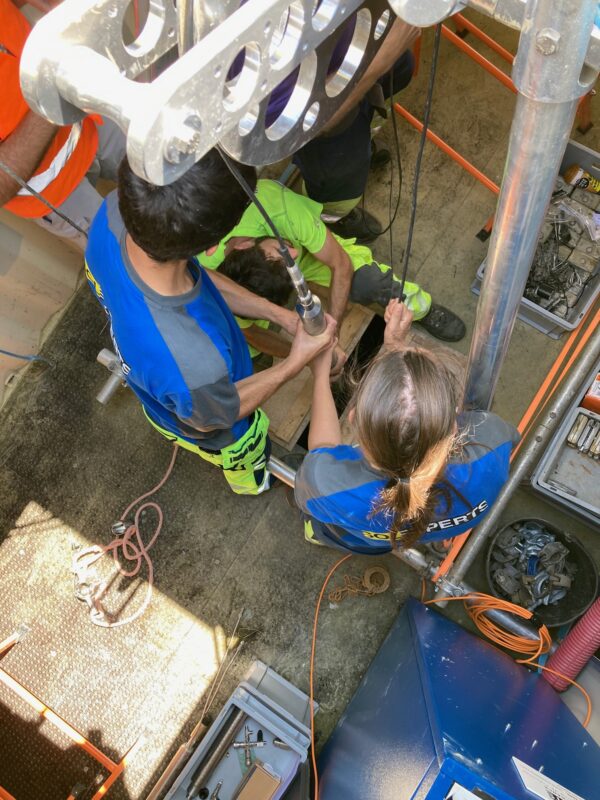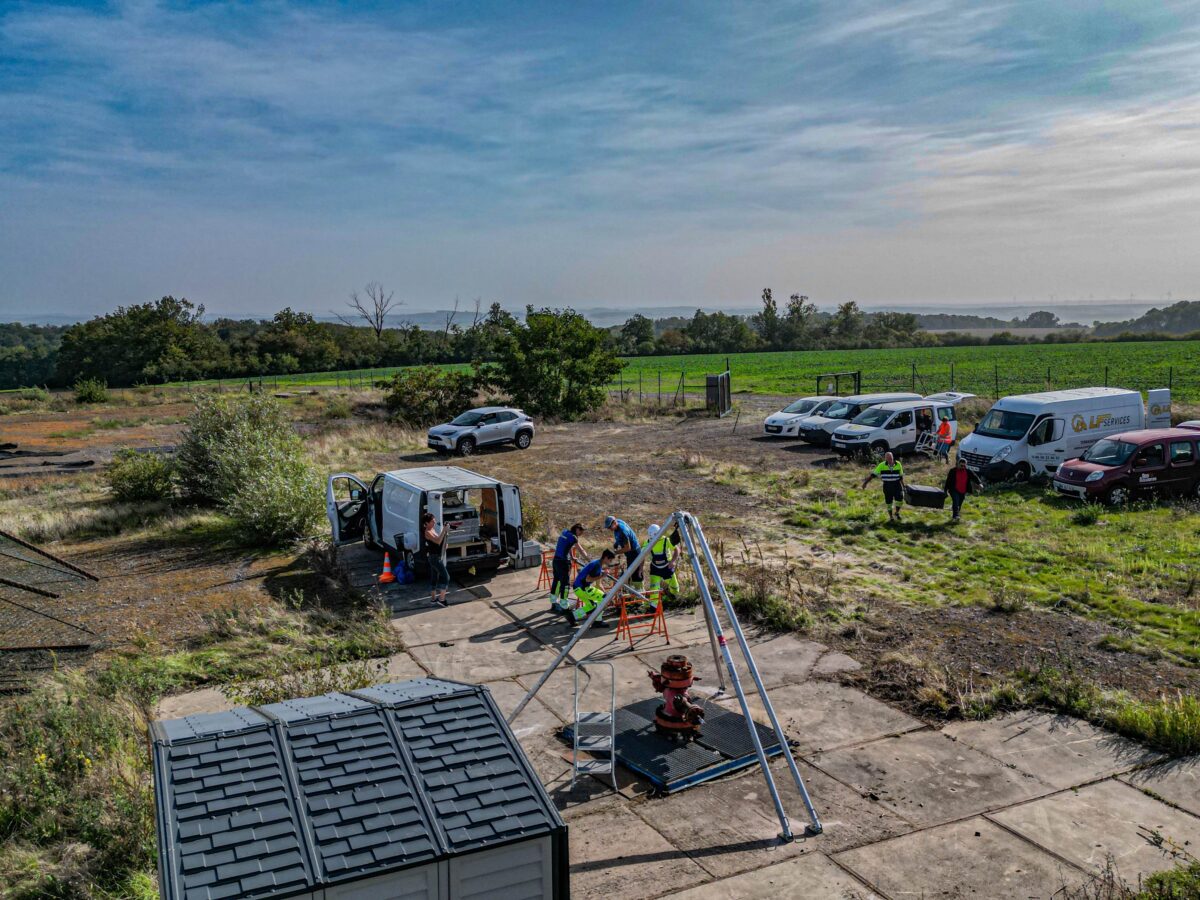A project in France, launched in 2018, is now garnering unprecedented interest from experts and politicians. A team of two researchers is investigating a structure in Lorraine which is 150 km long, 80 km wide, and 6 km deep.
While the country is set to stop hydrocarbon exploration soon, hydrogen production is a different political and societal story – at least for now. The geological structures of natural gas and natural hydrogen are also different.
“We think that the methane is produced in coal beds, while hydrogen at a great depth. We need high temperature, and the temperature increases with depth. We consider that the good temperature to initiate the reaction at 150 to 200 degrees,” Jacques Pironon, director of the GeoRessources Laboratory, told pv magazine. “We expect to find this temperature range between 5.000 and 6.000 meters.”
According to their initial results, samples of the coal layer at 600 meters show 1% hydrogen, whereas the percentage goes up to 17% at 1,250 meters. Researchers expect the proportion to further double at depth of 3,000 meters, as the “proportion of white hydrogen in the underground should go up linearly.”
The laboratory belongs to Université de Lorraine and the French National Centre for Scientific Research (CNRS). The project is founded by the French government, Région Grand-Est, and the European Union. Rumors suggest that the funding could increase, as it could also come from the central government in Paris. French President Emmanuel Macron recently said that so-called “white hydrogen,” or natural hydrogen, is a priority for the country.
At the moment, the two researchers are trying to test their hypothesis, suggesting that hydrogen is produced at high temperature in the presence of iron.
“When water is in contact with iron, in our case iron carbonate, hydrogen can be produced. The water molecule is broken by the reduction effect, a transfer of electron,” Pironon said. “In this case, the water molecule is broken. Iron, from its original Fe2+ form, is transformed into Fe3+ to equilibrate the reaction.”
The team, whose original task was to estimate the methane content of the Lorraine basin, expects a large amount of hydrogen: 250 million tons of hydrogen. But the project could find even more.
“This estimate could change in some months, because we will have more data. We expect higher content of hydrogen,” said Pironon.
The project was originally set to stop at the end of the year, but it will continue in 2024, given the interest from the central government and the region.
Popular content
“We are discussing with a lot of partners. The region would like to be the leader of the project,” said Pironon. “For the moment, I cannot say exactly the beginning of the new phase, as we are having discussions. We are discussing to start in April or May 2024.”
According to the researchers, several mayors of cities around the formation are interested in new sectors, as there are high levels of unemployment in the region.
“For local authorities the finding is good news. For the population it depends. Some ecological associations are against the exploitation of the underground;” said Pironon. “It is difficult for them to say they are against hydrogen, but they did not agree to drill. Still, they are a very minor part of the population.”
The team will continue to work with Française De l’Énergie, a company that specializes in the production of gas from old mines, with headquarters in the region and activities in France and Belgium. The team could though include new, bigger companies. The only pending question is the commercial value of this hydrogen.
“I don’t have idea about the production of hydrogen, and I am not sure about the costs. So for us, we are in an exploration phase, and we are thinking about new ways to explore,” said Pironon. “So the costs are difficult to define yet. In the case of conventional gas exploration, an O&G company is happy to find a reservoir 200 bars pressure, but in our case our pressure should be lower, around 20. We are in very different conditions.”
The team wants to develop new concepts and new techniques to cut costs and reduce environmental impacts.
“We want to develop a system to separate gases from water directly in the borehole. This system should also separate the different gases: methane, hydrogen, and nitrogen,” said Pironon. “If we have to produce hydrogen, but not methane, this is needed. So we are working on developing special membranes to be used directly down in the borehole.”
Together with Solexperts, the laboratory has developed the SysMoG probe, able to separate gases from water in the borehole and allowing gas transfer to the surface.
The team is in talks with companies and public entities in Belgium, Netherlands, Luxembourg and Germany, which are countries with similar geological formations. On a research level, the team is speaking with engineers in the United States, Australia, South Africa, India, and China.

This content is protected by copyright and may not be reused. If you want to cooperate with us and would like to reuse some of our content, please contact: editors@pv-magazine.com.


By submitting this form you agree to pv magazine using your data for the purposes of publishing your comment.
Your personal data will only be disclosed or otherwise transmitted to third parties for the purposes of spam filtering or if this is necessary for technical maintenance of the website. Any other transfer to third parties will not take place unless this is justified on the basis of applicable data protection regulations or if pv magazine is legally obliged to do so.
You may revoke this consent at any time with effect for the future, in which case your personal data will be deleted immediately. Otherwise, your data will be deleted if pv magazine has processed your request or the purpose of data storage is fulfilled.
Further information on data privacy can be found in our Data Protection Policy.